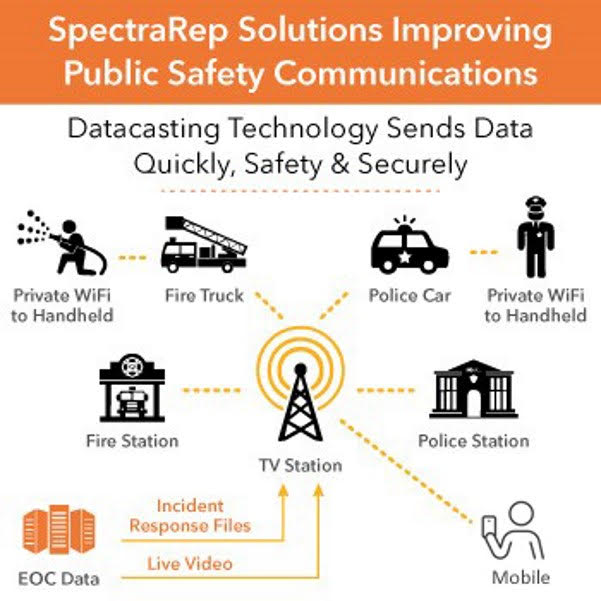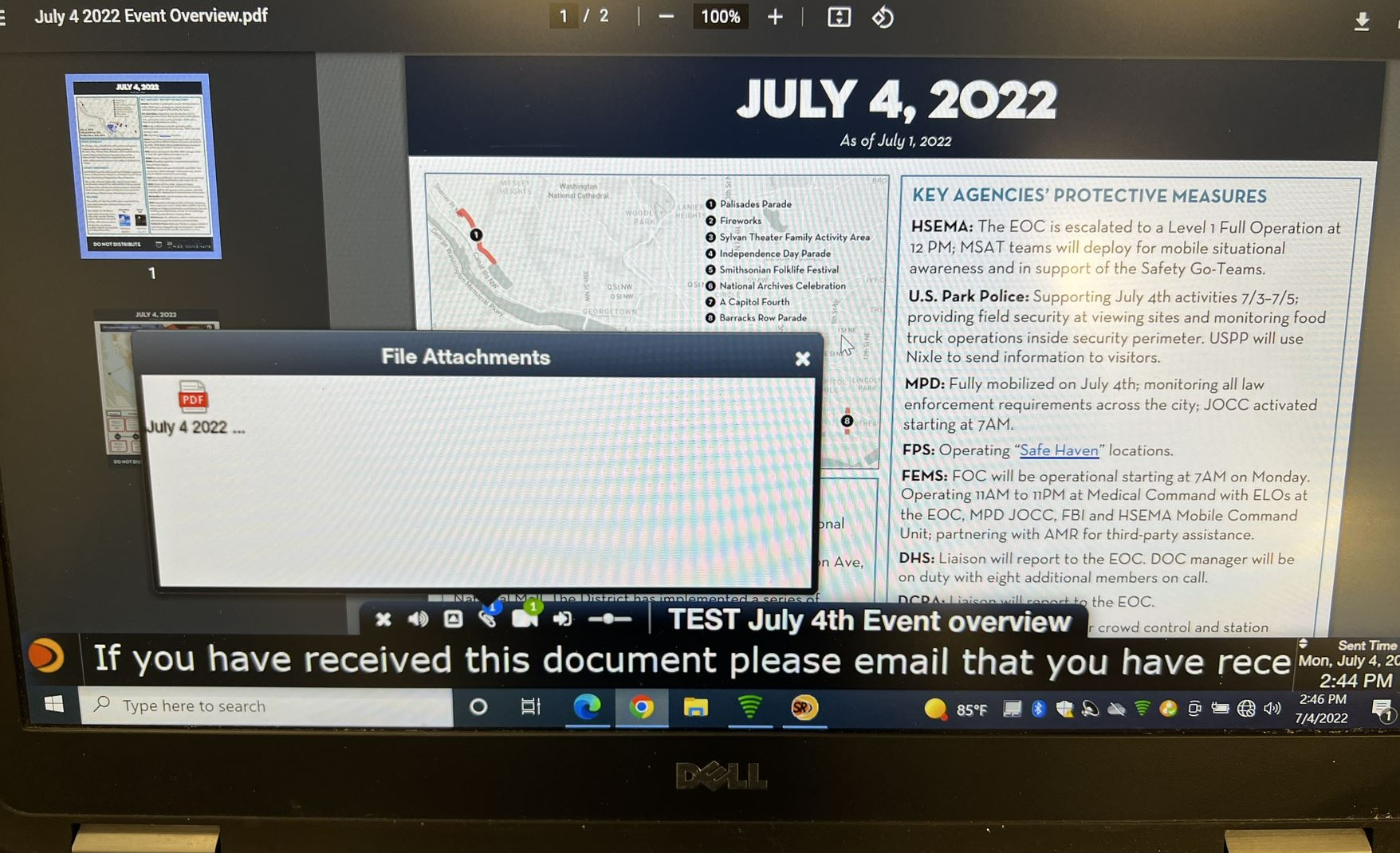NextGen Broadcast Delivered Public Safety Services During DC 4th Celebrations
SpectraRep’s IncidentOne datacasting solution kept public safety agencies up to date with advanced video alerts

CHANTILLY, Va.—SpectraRep, a provider of datacasting services for more than 20 years, in concert with Sinclair/ONE Media says it completed a successful NextGen Broadcast pilot of its IncidentOne datacasting solution for D.C. Homeland Security and Emergency Management and six other federal and local public safety agencies. This application delivered sophisticated emergency communications through improved video, alert, and file sharing among multiple public safety agencies during the 2022 July 4th celebrations in Washington, D.C. on the National Mall using the advanced spectrum platform capabilities enabled by the NextGen Broadcast standard.
Based on the NextGen Broadcast standard, IncidentOne layered a new secure wireless network on top of existing communication procedures to facilitate inter-agency sharing of data at unprecedented levels. Employing the NextGen Broadcast facilities of Sinclair Broadcast Group’s station WIAV and partnering with America’s Public Television Stations and the Advanced Television Systems Committee, the pilot program was a significant demonstration of the new capabilities of the Internet Protocol-based standard that dramatically improves television transmission, SpectraRep said.

IncidentOne is an existing enterprise-grade wireless emergency communications solution that uses over-the-air digital television (DTV) technology to deliver operational and crisis incident data quickly and securely.
While IncidentOne has been used in the past to datacast public safety information via DTV airwaves, SpectraRep says datacasting with the new and efficient NextGen Broadcast standard supports a more robust transmission signal, higher data capacity, and, for the first time, mobile reception.
“SpectraRep and our partners are extremely pleased that the datacasting pilot supported by ATSC 3.0—NextGen Broadcasting—provided an enhanced ability to protect the public with more bandwidth and reliable mobile reception around data sharing,” said Mark O’Brien, President of SpectraRep. “As shown during the pilot, our datacasting solution helps first responders identify potential threats and disseminate emergency response information more quickly and efficiently than ever before possible. It remains our goal to increase the ability of emergency responders to have what they need to protect lives.”
O’Brien also noted that the NextGen Broadcast signal provided flexibility for optimizing data capacity and signal reception in both indoor and mobile facilities, which is key to fully supporting public safety professionals in the field. He added that large-scale events typically overload cellular systems, making it difficult for public safety departments to communicate and exchange critical data.
Mark Aitken, president of Sinclair’s technology subsidiary, ONE Media 3.0, added, “The advanced datacasting capabilities using the NextGen Broadcast standard is exactly the type of service that broadcasters around the country can provide and is a unique example of why accelerated deployment of these capabilities is so critical. NextGen can save lives.”
Get the TV Tech Newsletter
The professional video industry's #1 source for news, trends and product and tech information. Sign up below.
NAB EVP, Technology/CTO Sam Matheny said "this live datacasting pilot spotlights the unique and valuable opportunities made possible by the ATSC 3.0 standard, especially when it comes to public safety. This successful program can provide a blueprint for federal, state and local first responders to strengthen their emergency communications capabilities and reliably share lifesaving information during times of disaster.
"NAB thanks the agencies and technology partners that participated in this project, as broadcasters continue to leverage ATSC 3.0 features to best serve the American people."
This article was updated to add NAB's statement.


Confirming the success of the pilot program is DC Statewide Interoperability Coordinator (SWIC), Charles Guddemi, who reported, “We observed success with streaming encrypted video over the datacast signal, and then could successfully target and send that video to other agencies. We also confirmed the ability to send alerts and files to the authorized participating agencies.”
Top successful outcomes from the pilot program include:
- Safe and secure inter-agency sharing of video, messages, and files was achieved using SpectraRep’s IncidentOne datacasting solution.
- Select agencies transmitted secure alert messages that also included attached files.
- SpectraRep’s datacasting solution reached command staff and decision makers across agencies without requiring access to or interconnection between individual agency secure networks.
- SpectraRep’s mobile phone video application provided access to handheld video sourced from agency personnel in the field to operations centers.
Technology partners in the pilot program include DigiCAP Ltd., West Pond Technologies, Sinclair Broadcast Group (WIAV) and their technology group ONE Media 3.0, E/M Wave, Winegard, Osprey Video and SpectraRep LLC. Key Association partners include APTS America’s Public Television Stations, ATSC, and the National Association of Broadcasters.
SpectraRep's partnership with APTS, in particular, stretches back nearly 20 years when it announced in 2003 it was working with the association to deliver public safety information via DTV airwaves.
A case study for the pilot program is available on the SpectraRep website. Click here to download.
Tom has covered the broadcast technology market for the past 25 years, including three years handling member communications for the National Association of Broadcasters followed by a year as editor of Video Technology News and DTV Business executive newsletters for Phillips Publishing. In 1999 he launched digitalbroadcasting.com for internet B2B portal Verticalnet. He is also a charter member of the CTA's Academy of Digital TV Pioneers. Since 2001, he has been editor-in-chief of TV Tech (www.tvtech.com), the leading source of news and information on broadcast and related media technology and is a frequent contributor and moderator to the brand’s Tech Leadership events.

